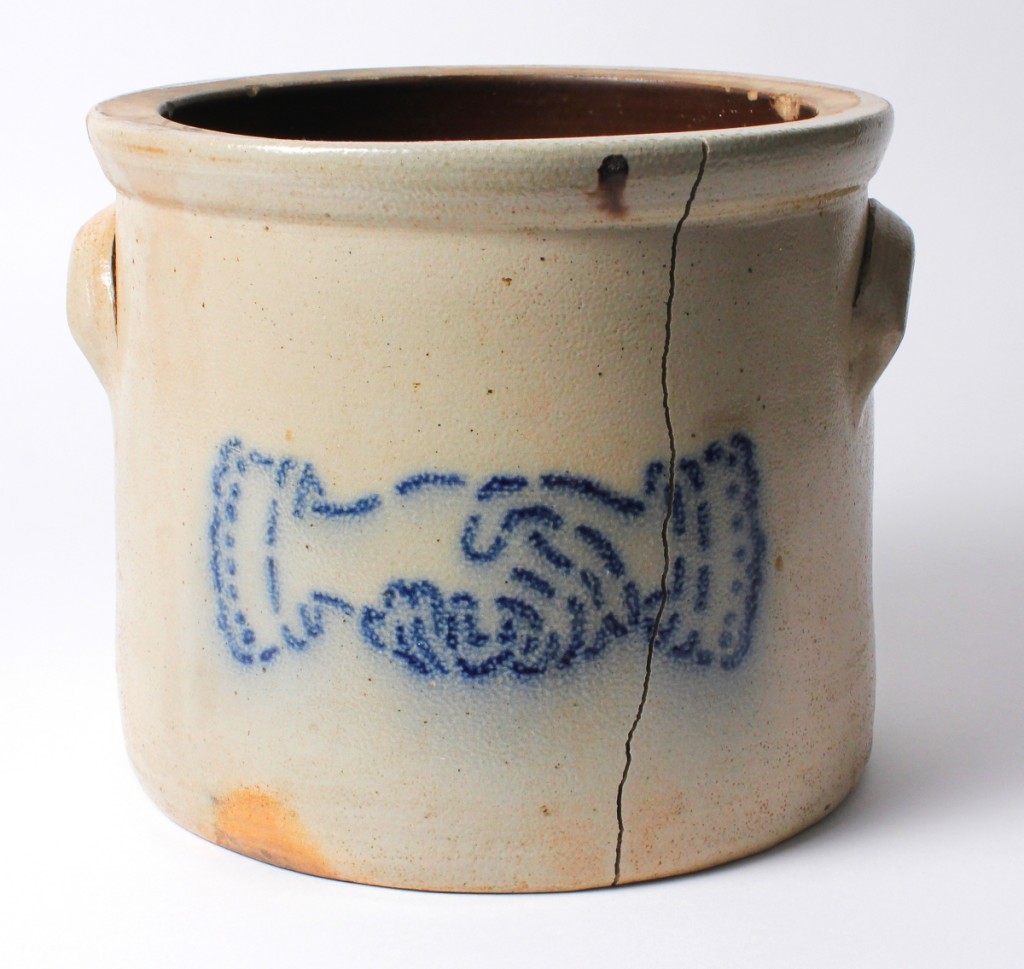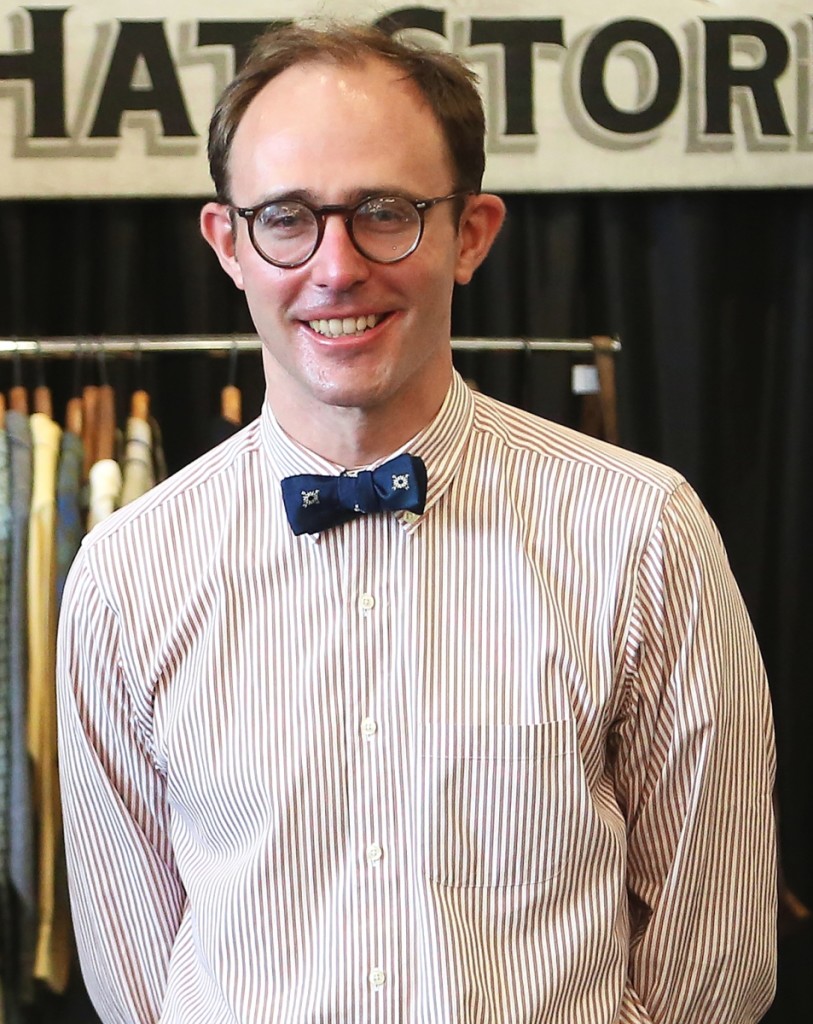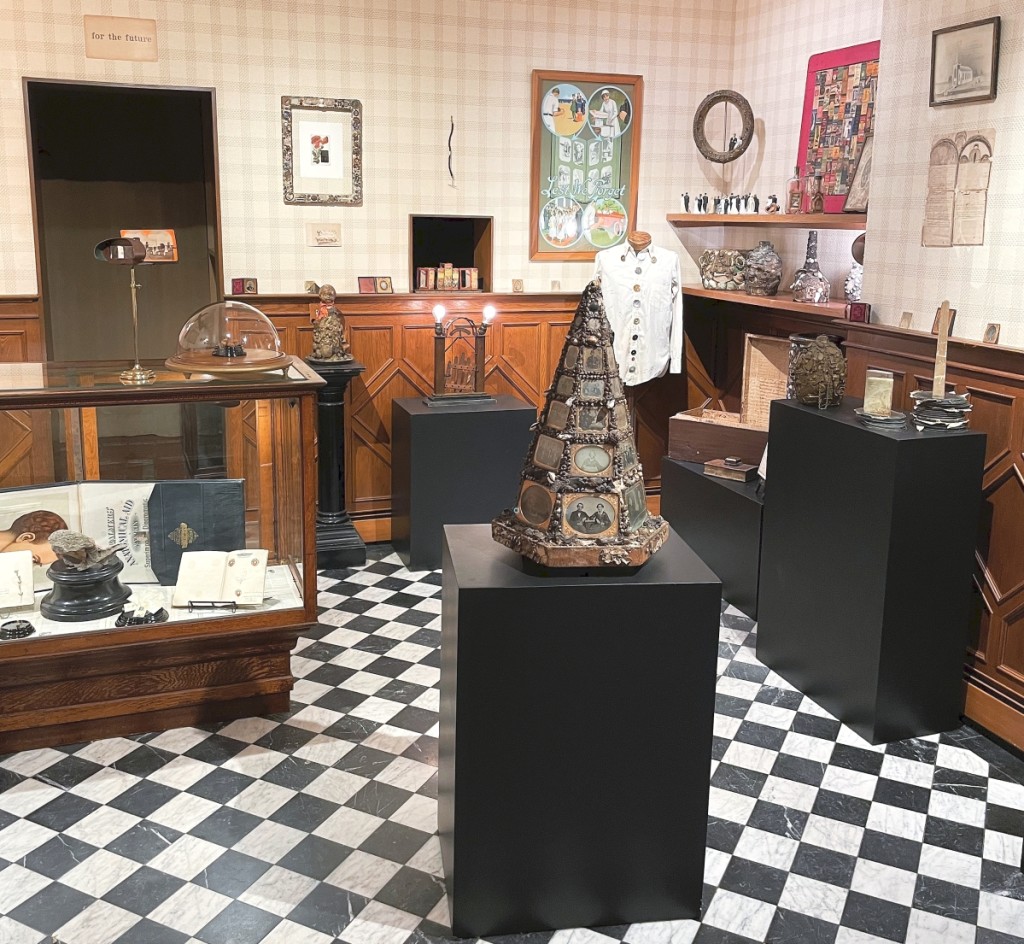Adam Irish, who deals under Old As Adam, is among a growing cohort of dealers who are redefining antiques for the Twenty-First Century. Out with formality, in with the unknown. A conversation with him is not like those with your average dealer, he cares little about listed artists and more about what the object has become and the story it tells. He translates those stories into thematic exhibitions across his gallery in Providence, a place where the ungoogleable resides and perception runs wild, where sincerity reigns and vision is born again.
Do you remember your first warm experience with antiques as a child?
The original attraction was within my family, my mother’s parents’ home was an example of Depression-era hoarding. You would go down to the basement and it was the history of Twentieth Century appliances. A dozen toasters, Nineteenth Century trunks, everything from their parents’ home and their parents’ home. It was just a treasure chest to explore as a kid. So being around it was part of it. Once it was an established interest, going into the woods and digging cellar dumps and bottle holes, that was my favorite thing to do as a kid. I was the weirdo in school, always fascinated by old stuff.
What was your path to becoming a dealer?
My mother had a mid-life crisis, as she called it, and decided to take out a booth in Town Pump Antiques in Northwood, N.H., in Antique Alley. That’s where I sold my first thing when I was 8 and I kept on doing it on the side up through high school and then college. My college even gave me another room where I could run my antiques business – I was selling online there and at the Middlebury Antiques Center. Then I got a “real job” after school, but antiques was always the thing everyone knew me for, it was what I did but not what I was going to do. I was working for the Department of Justice in Washington, DC as a paralegal, but I still found myself at Weschler’s every Tuesday at their Discovery sale. It was always filled to the brim with an estate of an admiral or a diplomat. I would take these extended lunch breaks and drag these lamps and paintings back through security to my office. At some point I considered other things, looking into grad school and law school, and it just hit me in the face that this is what I love to do, I should just do it. So I did.
Every dealer has a style. What do you look for in an object?
It has to speak to me, I am not good at selling things that don’t resonate with me personally in some way. When people ask me if I look for anything special, my reply is “I buy things that are special.” In a nutshell, that’s it. I do look for things that are a bit off-kilter, that have a certain mysterious or whimsical quality. I love folk art, so I’m attracted to things with an unguarded sincerity. I also just love playful things, things with a sense of humor, things that are fun to handle and play with. I’m also drawn to things that really speak to a sense of moral import in a way that they shed light on our history, or that they’re difficult to look at but are important to look at. I studied history in college and so I think a lot about the meaning of objects, both in their context historically and politically, and also completely outside of their context in a way where only time can take apart an object’s meaning or identity.

A firing crack runs through the clasped hands on a stoneware crock. “What interests me,” Irish says, “Is considering objects in conceptual ways. So if you think of an object as a potential metaphor, asking ‘What ways has an object changed over time?’ If you think about something as a piece of conceptual art and treat an object as such, then there are possibilities that emerge…”
Do you have something in your collection you’d never sell?
My house burned to the ground in 2016. I was renting at the time and it was an important house, the summer home of the painter Edmund Tarbell. It was completely leveled and I lost pretty much everything. There were some miraculous survivors, but if it wasn’t metal, it didn’t make it. I still consider myself a collector, as a mentality, but today I’ll pretty much sell anything because of that – and that was not true before. Of the several things that were rescued, those are keepers for all time. The inspiration piece for the current curated collection in my shop was in the fire and it survived. It had to be rebuilt, and now its not for sale. It’s a folk art lamp, made of copper probably by a metalworker. It takes the form of two copper posts with a gate in the center, and above is a sign that reads “Gate of Memories.” It probably dates to the teens or 1920s. When I bought it, I thought it was charged with memories, it meant a lot to someone. It is one of those objects that exists in this undefined space and then it took on a whole new meaning.
Who has shaped the way you see objects most in your career?
People often tell me I have a good eye, which I’m always happy to hear, but I say I’m hoping to have two good eyes one day. Whenever I hear that, I remind myself that as I’ve grown as a dealer and refined my eye and what I do, it’s been a result of trying on the eyes and lenses of other dealers. My own eye is one of many layered lenses of folks who I’ve admired and bought and sold from. It’s interesting how the markets create these allied eyes. There have been many dealers who have been inspirations to me over the years, Josh Lowenfels is a very good friend now that I met as a dealer beforehand. What I find inspiring about what he does is his ability to see things without an intermediary, seeing them afresh in a new way that very few people I’ve encountered are able to do. Going out on a buying trip, I never know what I’m looking for until I find it. To be able to do that truly and have your eyes open, being receptive to the unexpected, that’s one of my favorite things about the business and something Josh does really well.
When did you move into your latest space in Providence?
The grand opening was in February of 2020, just a few weeks before lockdown. It’s a great old building and they’ve done an excellent job maintaining it, I’m thrilled where I landed. In terms of retail traffic – I had a shop in Portsmouth for seven years prior- my opening day in Providence was four-times my best traffic in Providence and then it hit the Covid wall. In the past couple months, it’s finally coming back. There are a lot more students in town and people are comfortable walking in. It’s nice to have a shop because it’s been an online sales backdrop. That for me is what I love, a real place with real things for real people to talk about and interact with and share.
You talk about ‘Art Without Intent.’ What does that mean to you and where do we see it in the shop?
It’s something that is integral to the appreciation of antiques in general. Anyone who loves antiques knows or is attracted to this quality in one way or another. Even in the aesthetic sense, which is one of the realms it operates in, you see it in patina. It’s been shaped through interactions over time in ways its maker could never have expected. It gains these aesthetic qualities, like alligatored paint, that I would qualify as art without intent, of a kind that most of us know well. What interests me in particular is considering objects in conceptual ways. So if you think of an object as a potential metaphor, asking “What ways has an object changed over time?” If you think about something as a piece of conceptual art and treat an object as such, then there are possibilities that emerge that are subjective based on the viewer, but they are nevertheless fascinating and revelatory. I have this Nineteenth Century stoneware crock with a pair of shaking hands decorated in cobalt to the front. There’s a firing crack in the crock, and this crack that’s inherent to the crock almost bisects the hands, cuts them right in half. The shaking hands typically signify friendship, goodwill or charity, but regardless of the history, whether you know anything about the origin of this piece and whether you even define the meaning or emotions that the work may elicit, there’s something that I find very powerful about the object if you can look at it as a piece of art and not just an old thing. When I say art without intent, its art without an artist, art without an ego.
Is the idea spreading?
Together with a small group of dealers, I’m currently working on organizing a new show dedicated to found objects. It’s called “The Object Show: Art Without Intent” and we plan to hold our first exhibition in New York City in 2022. I hope it will evolve into a larger annual event featuring more dealers who look for things which transcend their forms through time and circumstance. The website is artwithoutintent.com or @artwithoutintent on Instagram.
Do you feel folk art is gaining momentum among a younger collecting base?
Yes, it’s certain. There’s something to do again with the sense of the unknown. When people ask me who my favorite artist is, I say “Anonymous.” The most compelling pieces of art I find are without an artist. Among a certain cohort of collectors, this embrace of the unlabeled, the unknown, the ungoogleable. With folk art, that’s the territory. I find that inspiring, and that’s why I’m drawn to folk art. In the art world, people read the artist’s name before they even look at the work. They’re looking up the artist’s value and that has no appeal to me whatsoever.
Tell me about the exhibitions in your shop.
When I first got into the New Hampshire show, one of the criteria of doing the show is we have to collect things for it all year, and I take that seriously. As I started putting things aside throughout the year, my wandering eye gave me a sense that a thread or an idea might help me decide what to put aside. The initial collections came from that and I decided one half of the store would be a found object gallery that would display these thematic exhibitions. Typically how they begin is I find one object that is compelling and inspirational, and then that clicks into gear my search for other things that match this theme. The last collection, “Humane: Objects of Kindness and Cruelty,” began with a fireman’s parade belt that I found in a market a couple years before that show opened. It was the Humane Hose Company, and the belt simply said, “Tooled Leather/Humane,” and to me that was a topic I never would have thought about or tried to pursue. But as I happened to find this object, I was drawn in that direction. That one was very topical, there was a lot of research that went into that catalog and I was pursuing certain thematic areas such as medicine, prisons and the treatment of animals, but in general the exhibitions take a more meandering, poetic route. The most recent one is “Gate of Memories,” a meditation on what memory is. There’s a large contingent of photography, folk art memoryware and mementoes of all kinds. These things are subjective and we can see them any way we want to, but just for the time being, I ask, “Why don’t we look closer and see what we see.” I’m not trying to foist meaning on any piece, but I am trying to open people’s eyes to see, for a moment, in a way they perhaps would not have seen otherwise.
That’s open through when? And what’s after?
Early 2022. The next one is “Anthropocene: Man-Made Nature,” it explores this idea of a geological era in which man has theoretically altered every aspect of the Earth from human activity. It goes into environmental concerns and I’m very excited about it. I’ve been collecting for it for a year and a half now.
Exhibitions are somewhat rare in the antiques world. What’s your take on that?
It’s a matter of style and presentation. There are dealers who do it in certain ways: Angus Wilkie of Cove Landing, he sends out these beautiful invitations with various themes. It’s a wonderful way to invite people into a space to experience something new. Steven Powers does this too, a show or collection with an overarching theme. From an artistic perspective, it certainly entertains me and I find it very rewarding and interesting in my own work. From a business perspective it engages people in a particular way and generates excitement and foot traffic. For me, the way I take these things on, it’s a passion project and it’s something I’m personally drawn to in the business. I can understand why dealers don’t put on exhibitions, because they can be incredibly time consuming. But they don’t need to be. Taking a small group of things that are new to you and doing some kind of presentation of them along a thread, it’s positive.
What changes do you foresee for the trade and buyers in the future?
What gives me hope, as a younger dealer, when the market is seemingly headed towards a cliff in many ways, is there appears to be a younger cohort of collectors that aren’t looking for anything in particular, but are actively looking. That to me is inspiring. For all the damage the internet has done to the antiques business, where at one point you could spend a lifetime collecting oil lamps or what have you, and now you can go online and have that collection in a half hour, what I hope is that right now there is this embrace of the ungoogleable, of the things you weren’t expecting to find. If you have buyers who are not pigeonholed into one random collecting realm or feel limited in some way, then their eyes will be open to much more. To me that’s inspiring, and looking ahead, there’s a lot of positive elements in the business.
-Greg Smith






